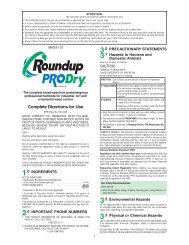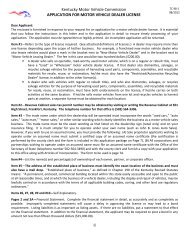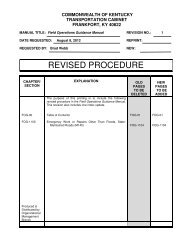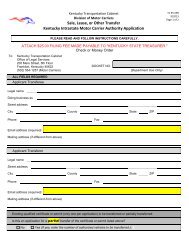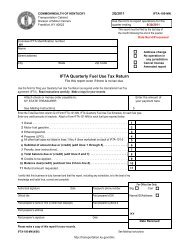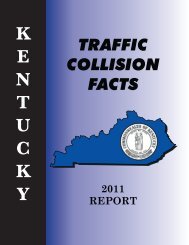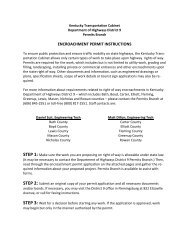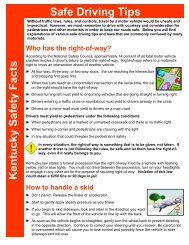woodland period moundbuilders of the bluegrass - Kentucky ...
woodland period moundbuilders of the bluegrass - Kentucky ...
woodland period moundbuilders of the bluegrass - Kentucky ...
- No tags were found...
Create successful ePaper yourself
Turn your PDF publications into a flip-book with our unique Google optimized e-Paper software.
clay’s workability and increased<strong>the</strong> strength <strong>of</strong> vessel walls.Temper also ensured that <strong>the</strong>unfired vessel would not shrinktoo much before firing, andthat during firing, it would heatevenly and not crack. Adenapotters did not fire <strong>the</strong>ir vesselsin kilns; <strong>the</strong>y used open-airfires. Their finished pots werewatertight and sturdy.Unlike <strong>the</strong>ir ancestor’sclay pots, which were crude,deep, cauldron-like basins,Adena potters made wellsmoo<strong>the</strong>d,thick-walled, <strong>of</strong>tenflat-bottomed jars (see pg. 42).These jars had thickened rimsMaking Adena fabrics, like this exampleshowing red and yellow dyed bands, tooka lot <strong>of</strong> work and time.and no handles <strong>of</strong> any kind. Very rarely, <strong>the</strong>y were decorated on <strong>the</strong>outside with geometric designs. With <strong>the</strong> increased importance <strong>of</strong> gardenplants in <strong>the</strong>ir diet, Adena peoples may have developed new ways toprepare food, ones that differed from those <strong>of</strong> <strong>the</strong>ir ancestors. This mayhave led <strong>the</strong>m to change <strong>the</strong> shape <strong>of</strong> <strong>the</strong>ir cooking vessels.Trade and ExchangeBluegrass Adena peoples traded with <strong>the</strong>ir neighbors. Theyundoubtedly exchanged locally available, but unworked, raw materials,like chert, banded slate, and granite. Unfortunately, perishable goodsrarely leave any trace in <strong>the</strong> archaeological record. Thus, we can onlyguess what kinds <strong>of</strong> food, baskets and fabrics, fea<strong>the</strong>rs, paints, andmedicinal or dye plants might have changed hands. During <strong>the</strong> exchange<strong>of</strong> <strong>the</strong>se tangible goods, <strong>the</strong>y likely also shared information, stories, andsongs.They probably also would have traded for special ritual items madefrom local materials. These could have been leaf-shaped chert blades, orbarite and hematite cones and boatstones. The latter also are sources <strong>of</strong>pigment. When rubbed lightly, barite produces a white powder. Hematite,when ground, produces a red powder called red ochre.The raw materials for some ritual items and burial <strong>of</strong>ferings werenot available locally or regionally, however. Bluegrass Adena peoples18



